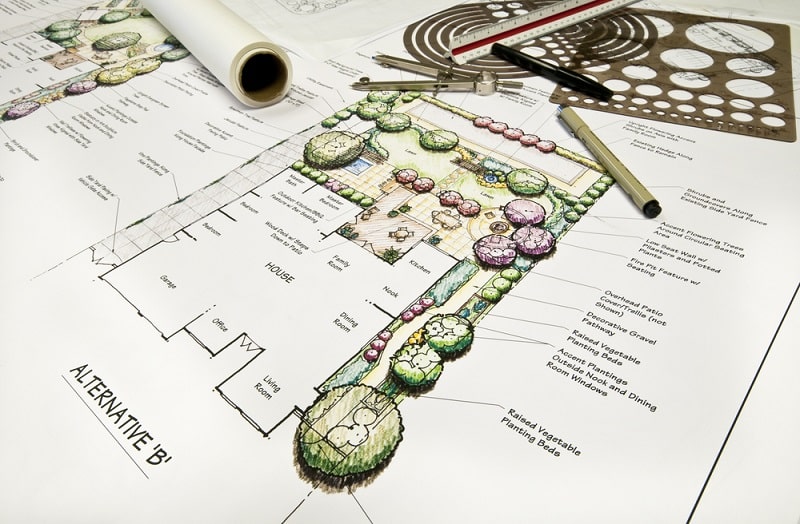Whether you’re experienced in landscape design or a complete novice, there are a set of unofficial principles that can play a helpful part in transforming the look and feel of your garden.
If you’re embarking on a completely new landscape design (or want to make a few touch-ups to freshen up your existing garden), here are four design principles to keep front of mind to create a beautiful, cohesive garden.
- Unity
Perhaps the most important aspect of any aesthetically pleasing landscape design is unity, or in simpler terms, consistency. If you have a few too many ideas for your design, placing unity front of mind will help you create a consistent garden that feels complete and fits well with surrounding features.
An easy way to apply the principle of unity is to create a ‘common thread’ feature that recurs throughout your garden. This could refer to a unified pot colour, plant type or specific garden tile.
- Simplicity
Similar to the principle of unity, simplicity is an extremely effective way to create a landscape design that feels neat, tidy and well put together. When it comes to a simplistic landscape design, less is more – so you should aim for a simple, specific theme, basic furniture and well-trimmed natural features for the most simplistic effect.
Simplicity will also work for more elaborate design ideas, just make sure you apply the ‘less is more’ principle to avoid overcrowding the garden. You can find simple garden design examples on our site.
- Repetition
If you’re struggling to achieve unity in your design, using repetition is a really easy way to create a cohesive and symmetrical garden that is incredibly appealing to the eye. To start, you’ll need one recurring element (for example, a tile, grass type or pot plant design).
Repeat this element to your desired amount, and where possible, try to weave it through other design features. This could mean a certain tile appears in different sections of your garden; tying a number of different garden elements and features together to create a cohesive and clean garden space.
- Proportion
Often, the biggest constraint you’ll face in garden design is size. If you’re struggling to make a particularly small garden feel spacious, make sure you get your proportions right at the landscape design phase. Consider the height, depth and volume of each specifically placed feature in your garden. For example, if you have a tall sculpture or feature, consider placing it in a corner to trick the eye into imagining a ‘taller’ garden space.
Ready to create your dream landscape design?
If you’re in the market to give your old garden a makeover, or design a completely new one, we’re here to help. At Looking Good Landscaping, we’re dedicated to creating the perfect solution to local gardening and landscaping challenges. We have over 24 years of experience within the Perth metropolitan area, specifically in the suburbs of Secret Harbour, Rockingham and Baldivis, and are determined to provide high-quality, friendly service on landscaping projects across the city.

